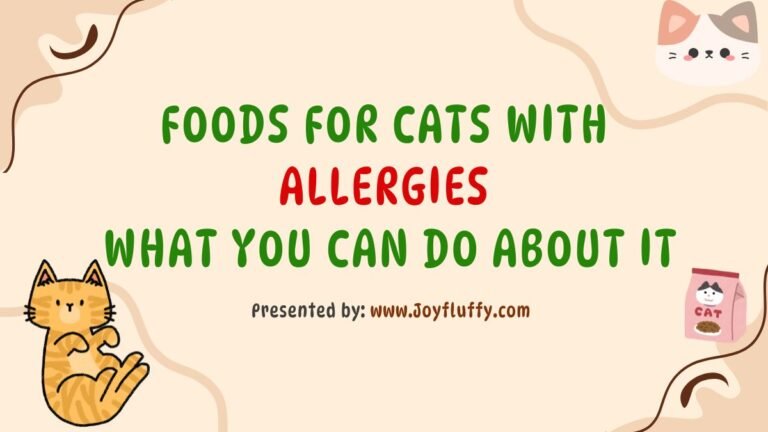How Science is Proving Pets Are Essential for Our Mental Health

You know the feeling. You come home after a day filled with stress, deadlines, and the constant buzz of modern life. As you open the door, you’re greeted by a enthusiastic tail wag, a soothing purr, or the excited scampering of feet. Almost instantly, the weight on your shoulders feels a little lighter. This isn’t just a fleeting moment of joy; it’s a profound biological and psychological shift. Science is now catching up to what pet owners have always known: our animals are not just pets; they are essential partners for our mental and emotional well-being.
This article delves into the compelling research behind the human-animal bond, exploring how our furry, feathered, and scaled family members act as a powerful, non-pharmaceutical prescription for a healthier mind.
The Neuroscience of the Human-Animal Bond: It’s in Our Chemistry
The positive feelings we get from petting our dog or cuddling our cat are more than just emotional—they are rooted in complex neurochemical changes within our bodies.
- The Oxytocin Feedback Loop: Often called the “love hormone” or “cuddle chemical,” oxytocin plays a crucial role in bonding, trust, and affection. Studies have shown that when humans and their dogs interact through gentle petting or even just prolonged gazing, oxytocin levels significantly increase in both species. This creates a powerful positive feedback loop, strengthening the bond and generating feelings of calm and contentment. This same hormone is released when mothers bond with their infants, highlighting the deep, primal nature of our connection with our pets.
- Lowering the Stress Hormone (Cortisol): While oxytocin rises, the stress hormone cortisol falls. A seminal study published by the National Institutes of Health (NIH) found that petting a dog for just 15 minutes significantly lowered blood pressure and cortisol levels in participants. This simple act physically dials down our body’s stress response, making us feel more relaxed and less anxious.
- Boosting “Feel-Good” Neurotransmitters: Interactions with pets can also trigger the release of dopamine and serotonin, two neurotransmitters heavily associated with pleasure, reward, and mood regulation. This biochemical cocktail explains why spending time with our pets can feel so uplifting and can be a potent tool for managing mood disorders like depression.
Beyond Chemistry: The Tangible Mental Health Benefits
The chemical changes in our brains translate into concrete, everyday benefits for our mental health.
1. Combating Loneliness and Social Isolation
Pets provide unconditional, non-judgmental companionship. For people who live alone, work remotely, or have lost a loved one, a pet’s presence can alleviate the crushing feeling of loneliness. They offer a constant source of interaction and a living being to care for and talk to. Furthermore, pets, especially dogs, act as social lubricants. Walking a dog often leads to conversations with other pet owners, fostering a sense of community and connection that is vital for human health.
2. Providing Routine and a Sense of Purpose
Depression and anxiety can make it difficult to get out of bed or find motivation. A pet changes that. They rely on us for their basic needs: feeding, walking, and playtime. This responsibility creates a non-negotiable structure and routine to the day. The act of caring for another living being provides a powerful sense of purpose and being needed, which can be incredibly therapeutic for those struggling with their mental health.
3. Encouraging Mindfulness and Presence
Animals live almost entirely in the present moment. They don’t ruminate on past mistakes or worry about future events. By observing our pets—a cat completely engrossed in a sunbeam, a dog joyfully sniffing every leaf on a walk—we are gently reminded to pull ourselves out of our own anxious thoughts and practice mindfulness. This grounding in the “here and now” is a core technique in modern cognitive behavioral therapy for anxiety.
4. Promoting Physical Activity (Especially Dogs)
The link between physical activity and mental health is well-established. Dog ownership, in particular, necessitates regular walks and playtime. This daily exercise isn’t just good for the dog; it’s a built-in mechanism for the owner to get fresh air, elevate their heart rate, and release endorphins, all of which are proven to reduce symptoms of stress and depression.
A Note on Responsibility: The Right Pet for Your Lifestyle
While the benefits are immense, it’s crucial to approach pet ownership responsibly. A pet is a sentient being with its own needs, not merely a tool for mental health.
- Choose Wisely: The right pet depends on your lifestyle. A high-energy herding dog might exacerbate anxiety for someone seeking a calm home, while a low-energy senior cat or a quiet fish tank could be perfect. Do your research on breed, energy level, and required care.
- Consider Alternatives: If full-time ownership isn’t feasible, you can still reap many benefits. Volunteering at a local animal shelter, pet-sitting for friends, or even fostering an animal provides interaction and purpose without the long-term commitment.
- The Financial and Time Commitment: Pets require financial resources for food, vet care, and supplies, as well as a significant investment of time. Ensure you are prepared for this commitment to avoid creating a new source of stress.
As experts from the Harvard Medical School have noted, the bond between humans and animals is a powerful one, but it must be entered into with care and consideration for the well-being of all involved.
Conclusion: A Partnership for Well-being
The evidence is clear and growing. Our pets offer us a unique form of emotional support that is backed by compelling science. They prescribe us daily doses of oxytocin, mindfulness, and routine without a single co-pay. They listen without judgment, love unconditionally, and remind us of the simple joys in life. In a world where mental health challenges are increasingly prevalent, the humble pet stands out as a powerful, furry, and essential partner in our journey toward well-being. So the next time your cat curls up on your lap or your dog insists on a walk, remember—you’re not just petting an animal; you’re actively filling your own prescription for a happier, healthier mind.
Frequently Asked Questions (FAQ)
Q1: What if I can’t have a pet in my home? Are there still ways to benefit?
A: Absolutely! You can still experience the mental health benefits of animals by:
- Volunteering: Local animal shelters always need help walking dogs, socializing cats, and assisting with operations.
- Fostering: Many rescues need short-term foster homes for animals, providing companionship without long-term commitment.
- Pet-Sitting: Offer to pet-sit for friends or family.
- Visit a Dog Park: Simply watching dogs play and interact can be a mood booster. Just be sure to ask owners before petting any animals.
Q2: Are certain pets better for mental health than others?
A: While dogs and cats are the most studied, the “best” pet is highly individual. The key is matching the animal’s needs to your lifestyle and personality. For some, the quiet companionship of a rabbit or the mesmerizing calm of an aquarium fish may be more therapeutic than a high-energy puppy.
Q3: Can a pet really help with clinical anxiety or depression?
A: Pets can be a tremendously valuable complement to professional treatment for clinical anxiety and depression. They provide routine, comfort, and motivation. However, they are not a replacement for therapy, medication, or other treatments prescribed by a medical professional. Think of them as a supportive part of a broader mental health toolkit.
Q4: How does the loss of a pet affect our mental health?
A: The loss of a pet is profoundly painful because the human-animal bond is real and significant. The grief experienced is valid and can mirror the loss of a human family member. It’s crucial to allow yourself to grieve, seek support from friends, family, or pet loss support groups, and acknowledge the incredible impact your pet had on your life.
Q5: Are Emotional Support Animals (ESAs) the same as service animals?
A: No, they are legally distinct. Service animals (usually dogs) are highly trained to perform specific tasks for a person with a disability (e.g., guiding someone blind, alerting to seizures). They have public access rights under the ADA. Emotional Support Animals provide therapeutic comfort through their presence but are not trained for specific tasks. They have limited rights, primarily regarding housing under the Fair Housing Act.


